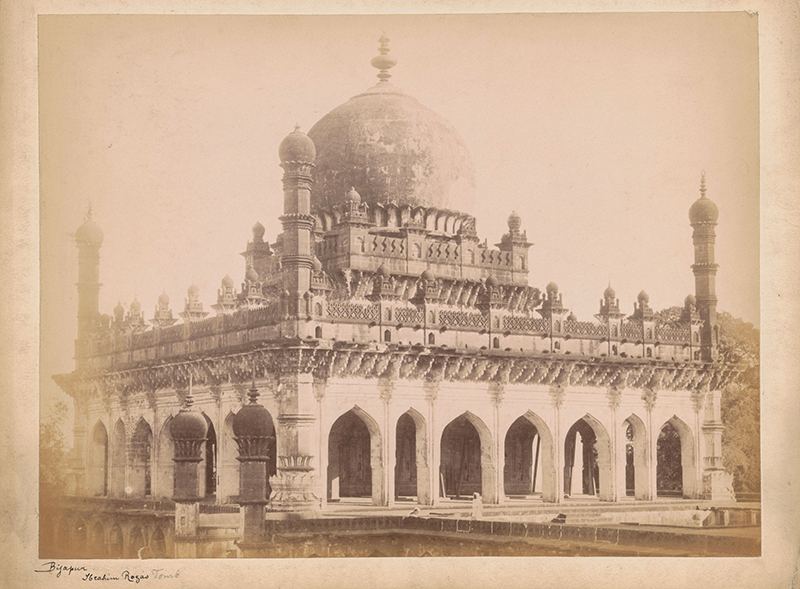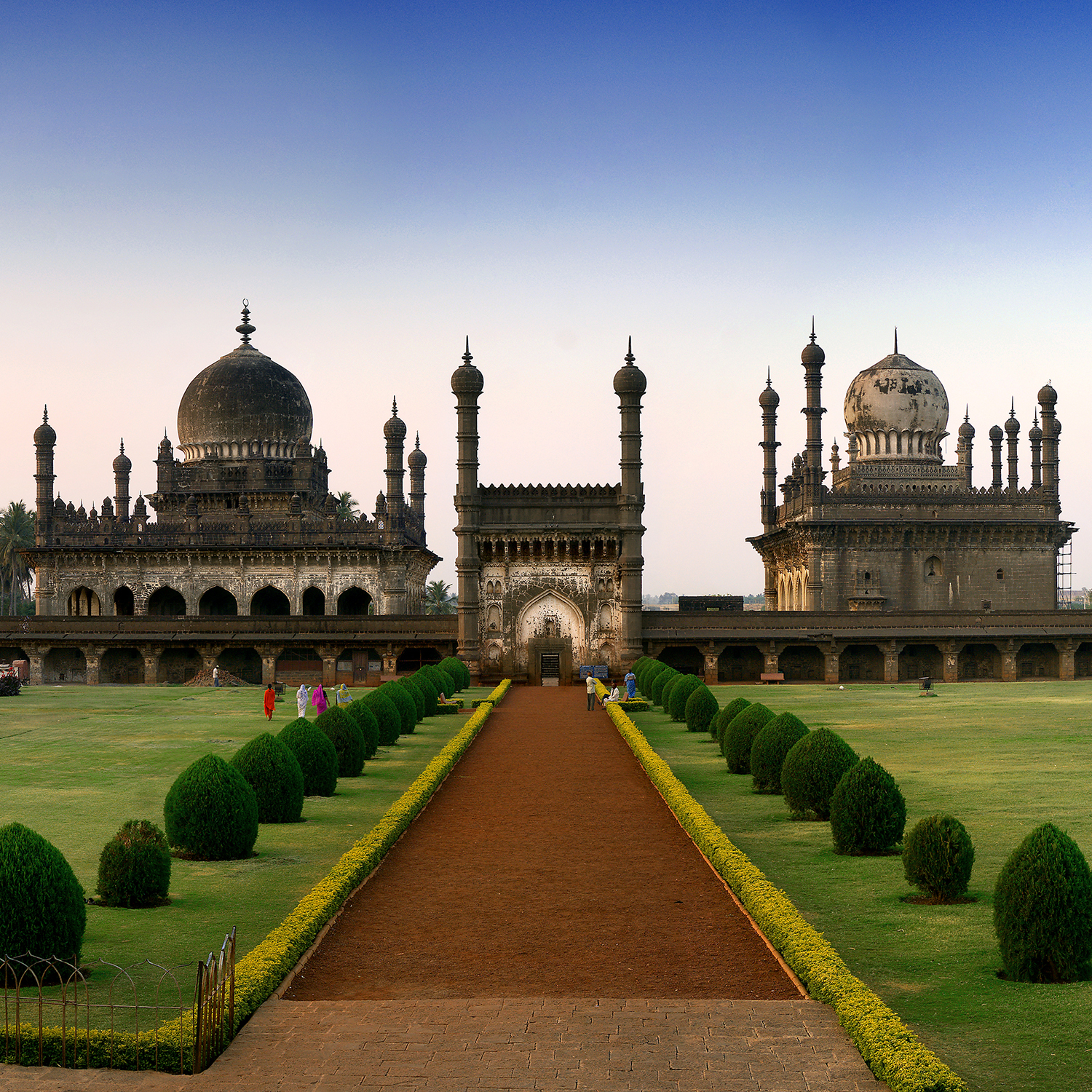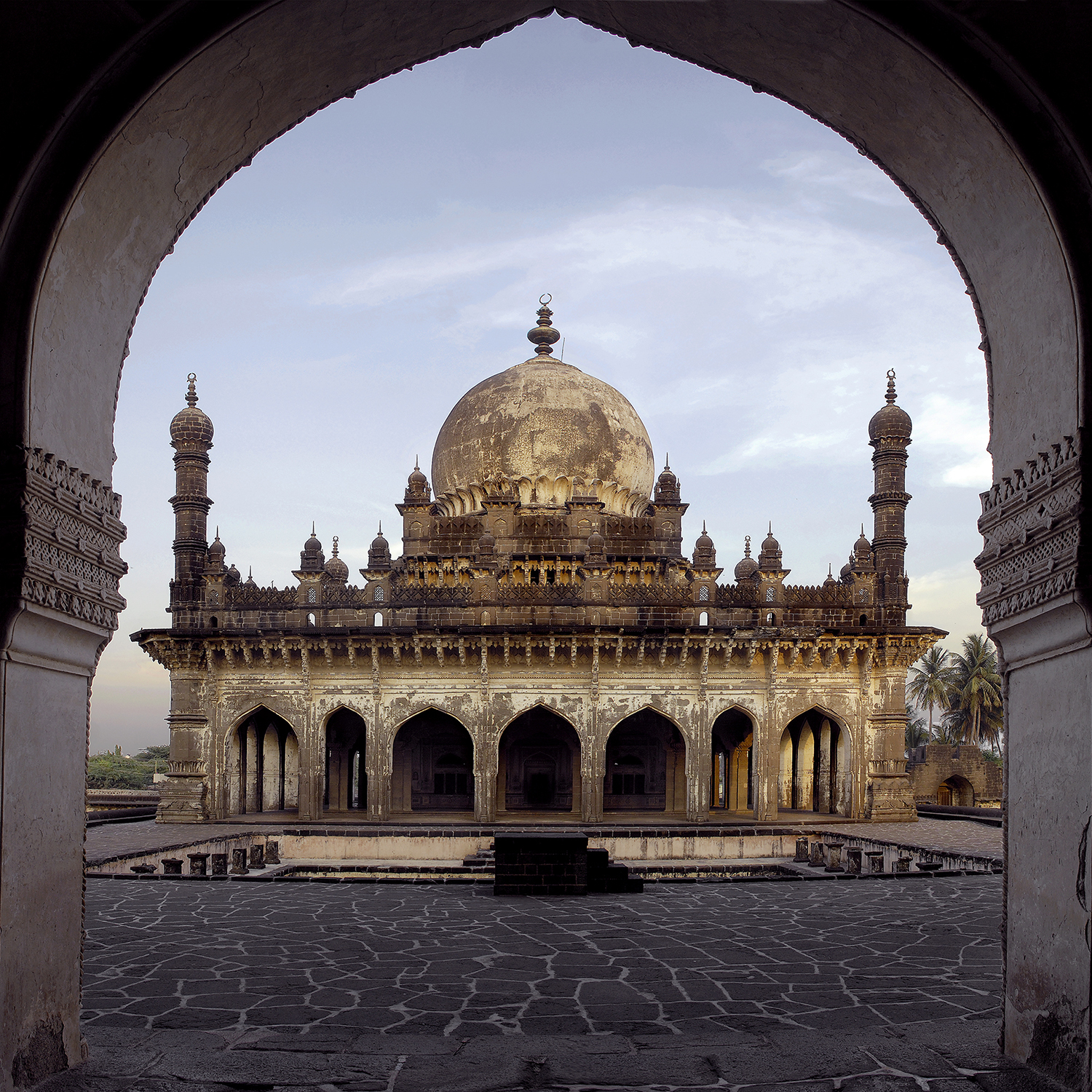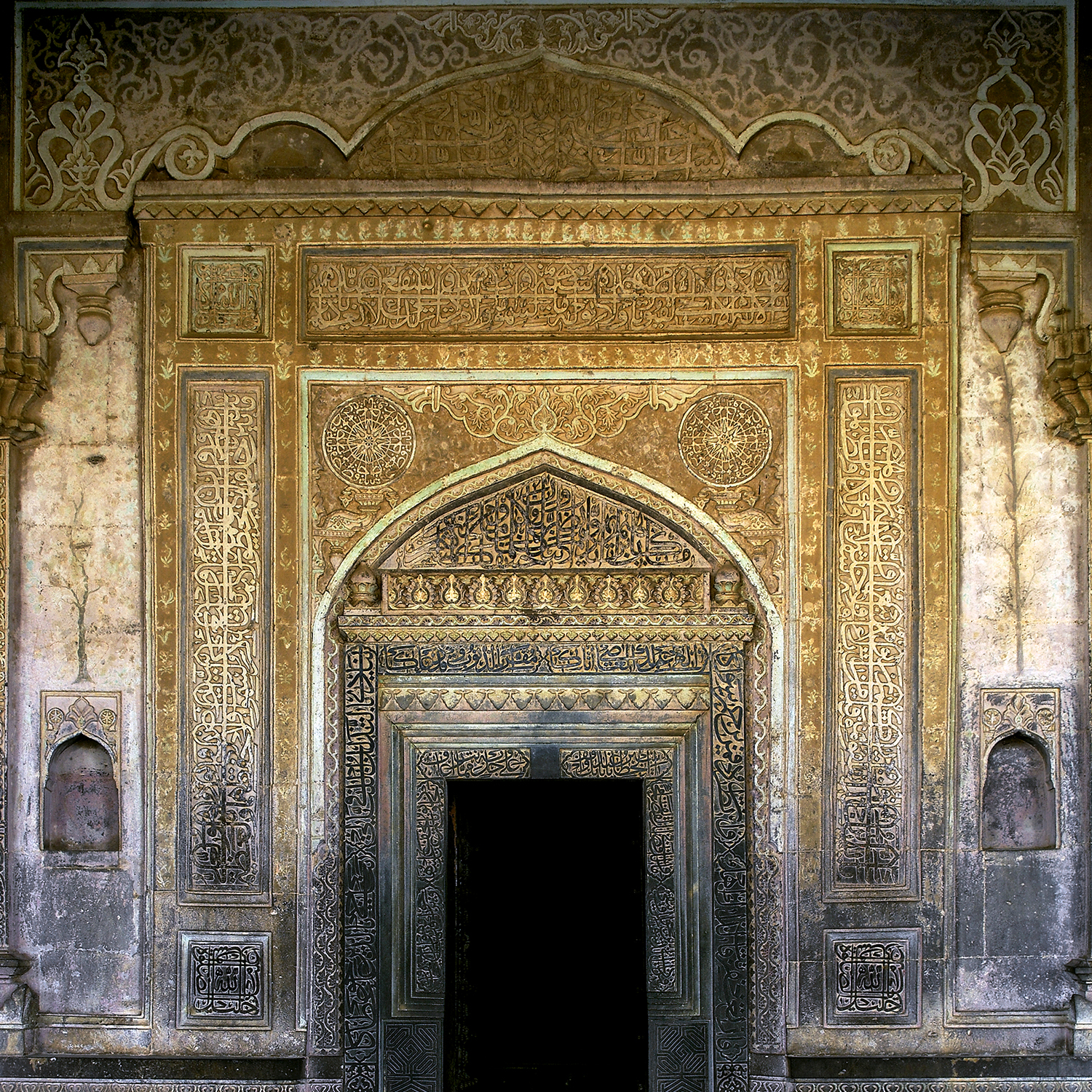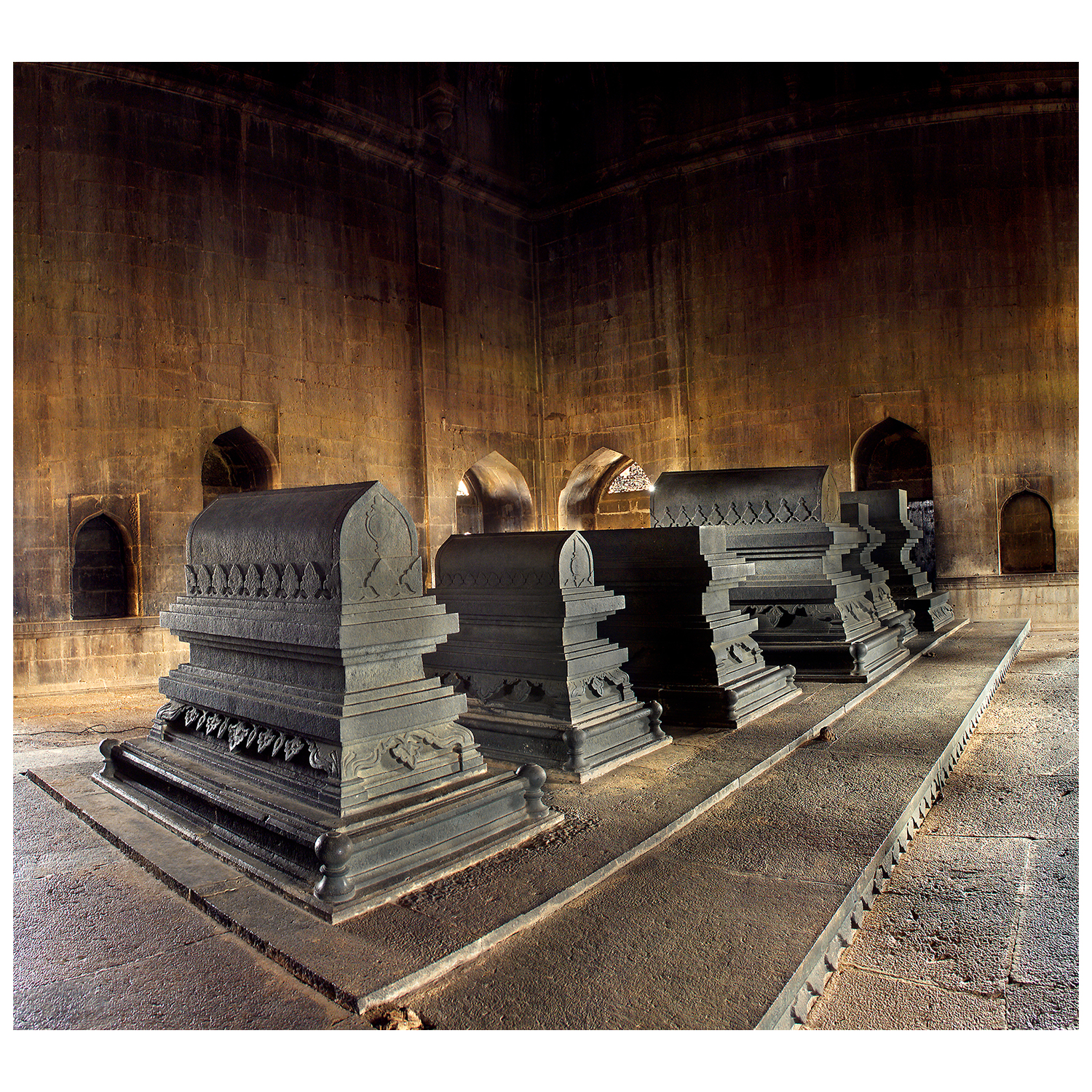ARTICLE
Ibrahim Rouza, Bijapur
The interior of the tomb chamber is unadorned, with the exception of small arched niches between windows along the wall. The use of basalt and the lack of a vault suggests that mortar has been used for the ceiling’s support. The coved ceiling features a large mandala panel, with a single floral medallion at the centre, lying directly above the grave of Ibrahim Adil Shah II. Apart from the king’s grave, the graves of Taj Sultan and their daughter, Zuhra Sultan, are among the six inside the tomb chamber.
The mosque is positioned at the western side of the plinth. The bracketed cornice, capitals and perforated parapet lining the upper portion of the tomb, as well as its four minarets, are mirrored in the mosque’s architecture. Only the facade of the mosque, lying on its western side, is decorated while the other three sides are unadorned. This facade has five arches, with each sporting a lace-like pattern along its edge, intricate solar medallions and carved arabesque patterns above the crown. The central arch is signified by the semi-circular patterns, adjacent to the solar medallion, being larger than the others. The cornice is heavily bracketed, which supports the chajja and goes over the mosque walls and minarets. The eave has carved lotus medallions on the underside of it. A row of simplified, miniaturised versions of the mosque lie along the parapet, corresponding to the columns between the arched bays. Of these, the leftmost one is now broken. A minaret is attached to each corner of the mosque, with four additional ones rising over the protruding mihrab on the western side of the mosque. A bulbous dome tops the centre of the mosque and features a high drum carved with a ring of long lotus petals. This dome, compared to the tomb’s dome, is more slender. The northern and southern walls of the mosque are undecorated except for a projecting window in each that features three arched openings, heavy bracketing and an eave with six miniature minarets on top, connected by a high parapet. There are also two small side entrances that are topped by miniature minarets. The interior of the mosque is relatively bare, with a series of vaults, each with a domed ceiling. The spandrels of arches and the domed ceilings feature strapwork. The central arch in the eastern wall inside the mosque leads to a small, ten-sided chamber with arched niches and a high, domed ceiling.
At the time of writing, the Ibrahim Rouza is maintained by the Archaeological Survey of India (ASI) and attracts a large number of visitors each year. In 2013, there was public concern regarding the accumulation of garbage and stagnant water at the complex grounds, which had been neglected due to administrative issues, but the issue has since been resolved.
Bibliography
\“Ibrahim Roza, Bijapur.” British Library. Accessed July 21, 2022. https://www.bl.uk/onlinegallery/onlineex/apac/photocoll/i/019pho000000937u00038000.html.
“Ibrahim Roza Suffers from Authorities’ Neglect.” The Hindu, June 24, 2013. Accessed July 21, 2022. https://www.thehindu.com/news/national/karnataka/ibrahim-roza-suffers-from-authorities-neglect/article4843681.ece.
Joshi, Bharathi. “Of Monuments Less Known.” Deccan Herald, Last updated on November 11, 2018. Accessed July 21, 2022. https://www.deccanherald.com/spectrum/monuments-less-known-702433.html.
Kamble, Maruti T. “Adil Shahi Mosques in Karnataka.” International Journal of Social Sciences and Humanity Studies 4, no. 1. (2012). Accessed July 21, 2022. https://dergipark.org.tr/en/download/article-file/257274.
Michell, George. “Indic Themes in the Design and Decoration of the Ibrahim Rauza in Bijapur.” In Sultans of the South: Arts of India’s Deccan Courts, 1323–1687. New York: The Metropolitan Museum of Art, 2011.
Open Research Library, Australia, National University. “Mosque of the Tomb of Ibrahim Rauza, 1615.” Accessed July 21, 2022. https://openresearch-repository.anu.edu.au/handle/1885/182757.
Raghubans, Kishore. “Deccan Sultanate Water Works at Bijapur with Special Reference to Gol Gumbaz and Ibrahim Rouza.” Heritage: Journal of Multidisciplinary Studies in Archaeology 2 (2014): 198–222. https://www.academia.edu/25344207/Deccan_Sultanate_Water_Works_at_Bijapur_with_Special_Reference_to_Gol_Gumbaz_and_Ibrahim_Rouza.
Vijayapura District. “Ibrahim Rouza.” Accessed July 21, 2022. https://vijayapura.nic.in/en/tourist-place/ibrahim-rouza/.




